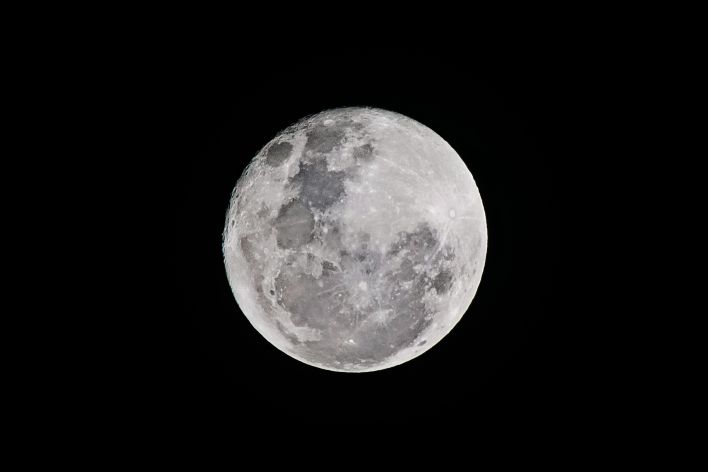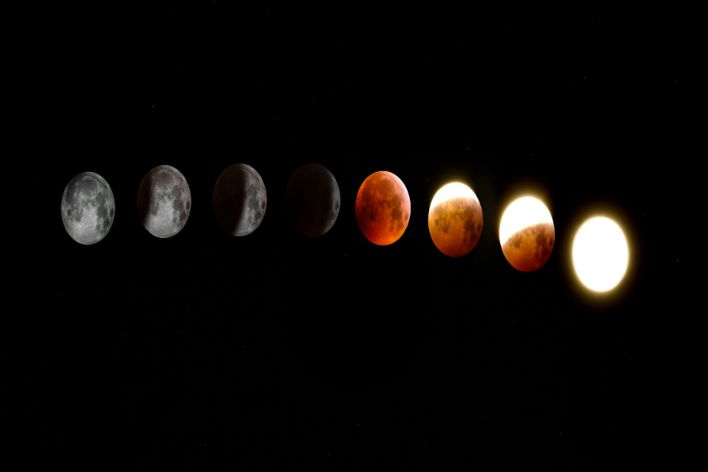The Moon: Earth's Natural Satellite
By Pinkey Sharma |
Date 08-08-2024

Table of Contents
Admissions Open for
What is the Moon and Why is it Important to Earth?
The Moon is Earth's only natural satellite, and it has enthralled humans for centuries. It literally plays its role almost everywhere, from ancient mythology to current scientific data. In this rather detailed blog, we shall speak about exactly what the Moon is, why it's so important for Earth, phases of the Moon and their meanings, and moon exploration missions—past and future. Our purpose is to make this very fascinating celestial body available to astronomy enthusiasts and kids alike.
Gravitational Influence:
This is one of those funniest facts about the moon that are attributed to the forming of tides here on Earth.
The most specific impact of the moon seems to have on the earth is the control of the ocean tides. This says that there is a force which pulls and pushes the sea level up and down and gives us those tides that define the marine lives and the coastal regions.
Stabilizing Earth's Axis :
The Moon also helps in maintaining the Earth’s axial tilt depending on which seasons. Without the influence of the Moon, Earth could drastically shift in its tilt and drastic changes in climate can destabilize life on the planet as we know it.
Entertaining the Nation and Illuminating the Night Sky :
The Moon brightens the night and serves to give some form of natural light at night making it crucial to humans and animals. They have been employed over the years in telling time, in day and night navigation, and crop seasonal planning.
Cultural and Scientific Significance :
It is a fact that the Moon has been of monumental importance to a number of civilizations and to religion in general. The Sun is the subject of numerous myths, fables, and pieces of art. They are in contrast with the object of scientific study, the Moon, which has answers to many questions related to events that happened at the early formation of the solar system as well as processes that formed Earth.
Fascinating Facts About the Moon

The Moon is the natural satellite of Earth, and it has captured human imagination for ages due to its mesmerizing beauty. It has a deep impact on Earth and human culture. However, somehow its mysteries continue to elude scientists and star gazers. Here are some cool facts about the Moon which underline its importance and features.
1. Formation and Composition
-
Origin: The most accepted theory can be stated that the Moon was formed nearly 4.5 billion years ago from the debris which was left over after a Mars-sized body collided with Earth.
-
Surface Composition: The surface is covered with a layer of dust and rocky wastes called regolith. It consists essentially of different minerals, the most common being silicates and oxides of elements like magnesium, iron, and calcium.
2. Size and Distance
-
Size: Moon's diameter is about 3,474 kilometers, which is almost a quarter of the diameter of the Earth, and in miles it is around 2,159.
-
Distance from Earth: This mean distance from the Moon towards the Earth is about 384 400 kilometers, this varies a bit because the Moon does an elliptical path around Earth.
3. Gravitational Influence
-
Tides: The moon's gravity is the major force in the Earth's ocean tides. It produces the rise and fall of the sea level, giving a high and low tide.
-
Stabilization of Earth: The Moon stabilizes the axial tilt of Earth, this again sustains the relatively stable climate and seasons of Earth.
4. Rotation and Orbit
-
Synchronous Rotation: It takes the Moon 27.3 days to rotate on its axis and the same amount of time to orbit Earth,because of this synchronous rotation, we see the same face of the Moon at all times from Earth.
-
Orbit Shape: The moon's orbit is elliptical in shape, which makes its distance from Earth slightly variable, these positions are called perigee and apogee.
5. Phases and Eclipses
-
Phases: There are eight different phases through which the Moon goes, running on its 29.5-day long lunar cycle. These are the phases resulting from different sunlit angles as the Moon orbits Earth.
-
Ellipses: The lunar eclipses occur when the Earth happens to come between the Sun and the Moon, casting its shadow on the latter. On the other hand, solar eclipses take place when the Moon passes between the Earth and the Sun so that the Moon does cast a shadow over the Earth.
6.Surface Features
-
Craters: Effects of asteroid and meteorite on planets are noticeable and there are many such points punched on the surface throughout the billion years. The largest of them is the South Pole-Aitken Basin, measuring at around 2,500 km in diameter.
-
Maria: These are the comparatively flat and dark areas on the surface of the Moon and severally called maria from the Latin word for ‘seas’. These areas of landforms owe their existence to volcanic movements in the earlier periods of earth. Lunar maria make up around 16 percent of the surface area of the Moon.
-
Highlands: The bright areas are the highlands of the Moon which is a very elevated region with rough surface and large number of crater.
7. Exploration Milestones
-
First Human Landing: It was on July 20, 1969, that NASA's Apollo 11 successfully made the first-ever landing of humans on the Moon. Astronauts Neil Armstrong and Edwin 'Buzz' Aldrin were the first humans to walk on the moon's surface.
-
Lunar Samples: Apollo returned 382 kg of lunar rocks and soils, which truly represent a gold mine of scientific information about the composition and history of the Moon.
8. Temperature Extremes
-
Surface Temperatures: One of the most amazing changes that the Moon undergoes is in the matter of its temperature. This, on the surface of the Moon, ranges from 127°C to – 173°C at night and 260°F during the day.
-
Atmospheric Absence: The moon has an extremely thin exosphere, with an inability to retain heat or protect the surface from hard solar radiations and the impacts of the micrometeorites.
9. Water on the Moon
-
Ice Deposits: Recent missions confirmed water ice in permanently shadowed craters at the poles of the Moon. This is very important for future lunar missions and possible human habitation.
-
Water in minerals: More than that, water also exists as hydroxyl molecules with lunar minerals in small quantities, showing that probably more water is available on the Moon than thought before.
10. Cultural Impact
-
Mythology and Folklore: Cultures have placed the Moon at center stage in myths, legends, and folklore, associating it with gods and goddesses, indicating time with agriculture, and indicating the passage of time.
-
Inspiration: The Moon has been eternal, forever an inspiration to numerous great works of art, literature, music, and verses. It transcends the limits of being another body floating across the sky, for it speaks of beauty, mystery, and even romance into any given night sky.
11. Future Missions
-
Artemis: NASA's program to send the next man and the first woman to the Moon in the 2020s. A sustainable lunar base infrastructure at the Artemis project envisions a full-scale exploration architecture that gives all resources necessary to live on the Moon and prepare Mars missions.
-
International Cooperation: Space agencies around the world, including ESA, Roscosmos, and ISRO, have charted their way forward in terms of cooperation on missions related to the exploration of the lunar surface, research of resources availability on the Moon, and testing new technologies for deep space exploration.
Phases of the Moon and Their Meanings

The Moon's appearance changes throughout the month due to its phases, which are determined by its position relative to Earth and the Sun. These phases are an essential aspect of lunar observation and are easy to understand with a bit of practice.
New Moon
-
Description: The Moon is between Earth and the Sun, and its dark side faces Earth.
-
Meaning: The new moon is a symbol of new beginnings and fresh starts. It is an excellent time for setting intentions and starting new projects.
Waxing Crescent
-
Description: A small, crescent-shaped sliver of the Moon becomes visible as it moves away from the Sun.
-
Meaning: This phase represents growth and progress. It's time to take action towards your goals.
First Quarter
-
Description: Half of the Moon is illuminated, and it appears as a half-circle in the sky.
-
Meaning: The first quarter symbolizes decision-making and overcoming obstacles. It's a time for making choices and taking decisive steps.
Waxing Gibbous
-
Description: More than half of the Moon is illuminated, but it is not yet full.
-
Meaning: This phase represents refinement and development. It's time to fine-tune your plans and make necessary adjustments.
Full Moon
-
Description: The entire face of the Moon is illuminated, and it appears as a complete circle.
-
Meaning: The full moon symbolizes completion and culmination. It's a time for celebrating achievements and reflecting on your journey.
Waning Gibbous
-
Description: The Moon starts to lose its illumination, but more than half is still visible.
-
Meaning: This phase represents gratitude and sharing. It's a time to give thanks for your blessings and share your abundance with others.
Last Quarter
-
Description: Half of the Moon is illuminated, but the opposite side from the first quarter.
-
Meaning: The last quarter symbolizes release and letting go. It's a time to discard what no longer serves you and prepare for a new cycle.
Waning Crescent
-
Description: A small, crescent-shaped sliver of the Moon is visible as it approaches the new moon phase.
-
Meaning: This phase represents rest and reflection. It's a time to recharge and contemplate your next steps.
Moon Exploration and Future Missions for Kids

The Moon has been a focal point of human exploration for decades. Understanding past and future missions can inspire young astronomers and future space explorers.
Past Moon Missions
Apollo Program
- Overview: The Apollo program, conducted by NASA, successfully landed humans on the Moon between 1969 and 1972. The first mission, Apollo 11, saw astronauts Neil Armstrong and Buzz Aldrin walk on the lunar surface.
-
Significance: These missions provided invaluable scientific data, samples of lunar rock, and a deeper understanding of the Moon's geology.
Luna Program
-
Overview: The Soviet Union's Luna program, active from 1959 to 1976, achieved several milestones, including the first human-made object to reach the Moon and the first robotic sample return mission.
-
Significance: The Luna missions laid the groundwork for robotic exploration and provided crucial data on the Moon's surface and environment.
Future Moon Missions
Artemis Program
-
Overview: NASA's Artemis program(link to astonomt for kids) aims to return humans to the Moon by the mid-2020s, with a focus on sustainable exploration and establishing a long-term presence.
-
Goals: The program includes landing the first woman and the next man on the Moon, building a lunar base, and preparing for future missions to Mars.
Lunar Gateway
-
Overview: The Lunar Gateway is a planned space station that will orbit the Moon, serving as a staging point for lunar missions and deep space exploration.
-
Goals: The Gateway will support scientific research, provide a platform for international collaboration, and facilitate future missions to Mars.
Lunar Rover Missions
- Examples: Several space agencies, including NASA, ESA, and ISRO, are planning to deploy robotic rovers to the Moon to conduct scientific research and test new technologies.
- Goals: These missions aim to explore the lunar surface, search for water ice, and gather data on the Moon's resources.
Moon Missions for Kids: Inspiring the Next Generation
Educational Programs
- Overview: Space agencies and educational institutions offer a variety of programs and resources to engage kids in lunar science and exploration.
- Examples: NASA's Artemis Student Challenges, the European Space Agency's Moon Camp, and interactive online platforms like NASA's Space Place.
Hands-On Activities
- Examples: Building model rockets, creating moon phase charts, and participating in astronomy clubs can spark an interest in space exploration.
- Benefits: These activities help kids develop critical thinking, problem-solving skills, and a passion for science.
STEM Education
- Importance: Encouraging kids to pursue studies in Science, Technology, Engineering, and Mathematics (STEM) is crucial for the future of space exploration.
- Opportunities: Programs like FIRST Robotics, science fairs, and space camps offer hands-on experiences and mentorship to inspire the next generation of scientists and engineers.
Conclusion
The Moon, being the natural satellite of Earth, is of sheer importance to our planet and has a huge impact on our lives. Its phases guided human activity for many centuries, while its exploration opened new frontiers in science and technology. Looking ahead, study and exploration of the Moon continue to inspire and educate future generations of astronomers, scientists, and space enthusiasts. It is by such understanding: the Moon's significance, phases, and the exciting missions that have and will further explore the Moon—that our central role in relation to this celestial body in our solar system and in the quest for knowledge becomes meaningful.
FAQS:
What is the first satellite of India?
Aryabhata. The Aryabhatta spacecraft, named after the famous Indian astronomer, was India's first satellite; it was completely designed and fabricated in India and launched by a Soviet Kosmos-3M rocket from Kapustin Yar on April 19, 1975.
What moon is closest to Earth?
Its closest point is the perigee, which is an average distance of about 226,000 miles (363,300 kilometers) from Earth. When a full moon appears at perigee it is slightly brighter and larger than a regular full moon – and that's where we get a "supermoon".
How is the moon useful to Earth?
The brightest and largest object in our night sky, the Moon makes Earth a more livable planet by moderating our home planet's wobble on its axis, leading to a relatively stable climate. It also causes tides, creating a rhythm that has guided humans for thousands of years.
How is the moon a natural satellite?
Moon is a natural satellite revolving around the earth. Because the moon is a celestial object revolving around the earth, it's not a human-made machine sent out to revolve in an orbit fixed by humans.
Liked what you read? Feel free to share this article with your friends and spread the knowledge!
Related blogs:
Tools for Young Astronomers: Explore the top tools for young astronomers with us!
Exploring Stars and Constellations: Explore an extensive guide to learn about stars and constellations.
Exploring Other Celestial Bodies: Discover the wonders of our solar system with this fascinating guide
CBSE Schools In Popular Cities
- CBSE Schools in Bangalore
- CBSE Schools in Mumbai
- CBSE Schools in Pune
- CBSE Schools in Hyderabad
- CBSE Schools in Chennai
- CBSE Schools in Gurgaon
- CBSE Schools in Kolkata
- CBSE Schools in Indore
- CBSE Schools in Sonipat
- CBSE Schools in Delhi
- CBSE Schools in Rohtak
- CBSE Schools in Bhopal
- CBSE Schools in Aurangabad
- CBSE Schools in Jabalpur
- CBSE Schools in Jaipur
- CBSE Schools in Jodhpur
- CBSE Schools in Nagpur
- CBSE Schools in Ahmednagar
- CBSE School In Tumkur

Call Us to know more about Orchids
Swipe Up


.jpg&w=1920&q=80)













